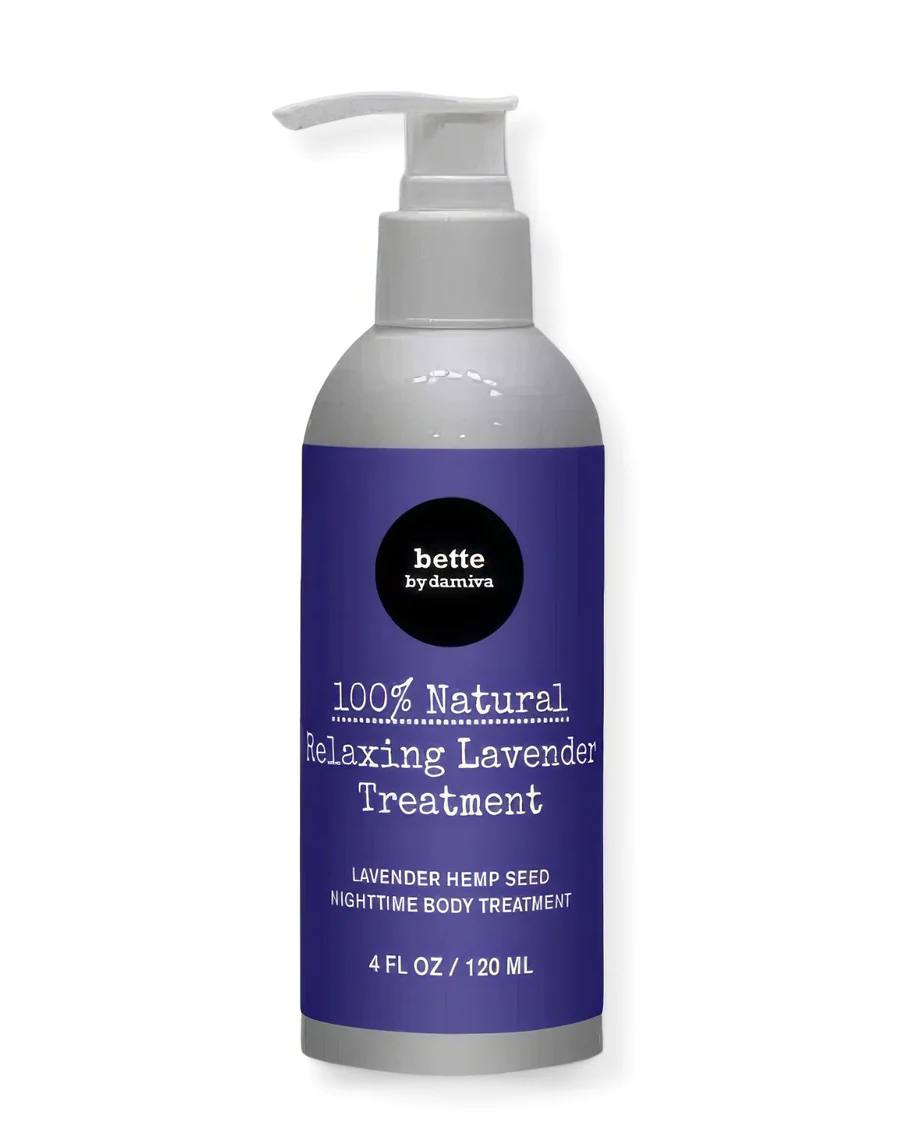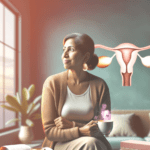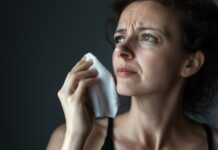Menopause marks a significant transition in a woman’s life, signaling the end of her reproductive years. It is defined as the point in time when menstrual cycles permanently cease due to the natural depletion of ovarian oocytes from aging. The journey to menopause begins with perimenopause, a phase that can start in a woman’s early to mid-40s and is characterized by hormonal fluctuations that affect her ability to reproduce. This stage can last anywhere from three to five years. A woman is considered to have reached menopause after she has gone 12 consecutive months without menstruating. Following menopause is the postmenopausal phase, where the symptoms of perimenopause can ease for many women.
Hormonal Changes and Their Effects
The hormonal changes that accompany menopause are primarily due to a decline in the production of estrogen and progesterone by the ovaries. These hormones have far-reaching effects beyond the reproductive system, influencing the urinary tract, nervous system, heart, brain, bones, and skin. As estrogen levels decrease, women may experience a range of symptoms, including hot flashes, night sweats, mood changes, and various forms of pain. Estrogen plays a role in reducing inflammation; thus, its decline during menopause can lead to increased joint pain and conditions such as arthritis. Additionally, lower estrogen levels can result in changes in skin elasticity and moisture, leading to increased bruising and discomfort.
Average Age and Duration
The average age for a woman to reach menopause in the United States is 51 years old. However, the onset and duration of menopause can vary widely due to factors such as genetics, lifestyle, and overall health. The perimenopausal phase leading up to menopause typically spans several years, while postmenopausal symptoms may persist for an additional few years. It’s important to note that while the duration of menopause-related symptoms varies, most women will experience relief from these symptoms within two to five years after menopause begins.
In conclusion, menopause is a natural biological process with distinct stages, each accompanied by hormonal changes that can affect a woman’s body and quality of life. Understanding these stages and their implications is crucial for managing the transition effectively and seeking appropriate medical support when necessary.
Hormonal Fluctuations and Pain Symptoms
Menstrual Cycle Hormones
The menstrual cycle is regulated by hormones such as luteinizing hormone (LH) and follicle-stimulating hormone (FSH), which are produced in the pituitary gland. These hormones stimulate the ovaries to produce estrogen and progesterone. During perimenopause and menopause, these hormones fluctuate and can cause various painful symptoms.
Cramps and Breast Tenderness
Changes in the menstrual cycle can lead to cramping that is more intense than previously experienced. Cramps can be accompanied by increased breast tenderness before and during menstruation. The menstrual flow may also vary, being light some months and heavy in others, contributing to discomfort.
Migraine Headaches
Estrogen fluctuations are linked to migraine headaches. Some women may experience migraines for the first time or notice an increase in severity or frequency during perimenopause. Conversely, others may see a reduction in migraines as they enter menopause, possibly due to the diminishing levels of estrogen which can otherwise trigger headaches.
Joint Pain and Arthritis
Menopause may lead to joint pain affecting knees, shoulders, neck, elbows, or hands. Estrogen helps reduce inflammation, and as its levels decline, inflammation may increase, causing discomfort and potentially exacerbating conditions like menopause-related arthritis.
Skin Changes and Bruising
Low levels of estrogen can decrease skin elasticity and its ability to retain water, which acts as a buffer against injury. This can result in thinner skin and more frequent, painful bruising, especially on the backs of the hands.
Understanding the connection between hormonal fluctuations and pain symptoms during menopause is crucial for managing discomfort and maintaining quality of life. While these symptoms are common, they can often be managed with appropriate treatments and lifestyle adjustments.
Menopause and Chronic Pain Conditions
Fibromyalgia and Sensitivity to Pain
Menopause is a significant life transition that can bring about various physical and emotional changes. Among these changes, an increase in sensitivity to pain is often reported, particularly in women who suffer from fibromyalgia. Fibromyalgia is a chronic condition characterized by widespread musculoskeletal pain, fatigue, and tenderness in localized areas. Research indicates that women with fibromyalgia may experience an intensification of their symptoms during menopause. This heightened sensitivity to pain can be attributed to hormonal fluctuations, particularly the decline in estrogen levels, which is known to modulate pain perception.
Estrogen has anti-inflammatory properties and plays a role in the functioning of the nervous system. As estrogen levels drop during menopause, the body’s natural ability to manage pain and inflammation may diminish, potentially exacerbating fibromyalgia symptoms. Additionally, menopause can lead to sleep disturbances, mood swings, and increased stress, all of which can further aggravate pain sensitivity in fibromyalgia patients.
Differentiating Menopause Symptoms from Fibromyalgia
Distinguishing between menopause symptoms and fibromyalgia can be challenging, as both conditions share overlapping features such as joint pain, fatigue, and sleep problems. However, there are key differences that healthcare providers consider when making a diagnosis. Menopause-related symptoms are directly linked to hormonal changes and typically include hot flashes, night sweats, and irregular periods. On the other hand, fibromyalgia is characterized by a distinct pattern of pain that is widespread and often accompanied by specific tender points on the body.
It is crucial for women to communicate their symptoms accurately to their healthcare providers. Keeping a detailed symptom diary that includes the nature, location, and timing of pain can be instrumental in differentiating between the two conditions. Additionally, healthcare providers may conduct blood tests to assess hormone levels and rule out other conditions, such as thyroid disorders, that can mimic the symptoms of both menopause and fibromyalgia.
Understanding the interplay between menopause and chronic pain conditions like fibromyalgia is essential for effective management. Women experiencing these symptoms should seek medical advice to explore treatment options that can alleviate discomfort and improve quality of life. Treatment may include hormone replacement therapy, physical therapy, stress reduction techniques, and medications specifically targeting fibromyalgia pain. By addressing both menopausal changes and fibromyalgia symptoms, women can navigate this transitional period with greater ease and comfort.
Sexual Health and Menopause
Pain During Intercourse
One of the more challenging aspects of menopause for many women is the onset of pain during intercourse, a condition known as dyspareunia. As estrogen levels decline, vaginal tissues become thinner and less elastic, leading to dryness and discomfort. This can transform what was once a pleasurable experience into one of pain and distress. Between 17% and 45% of postmenopausal women report experiencing painful intercourse, which not only affects physical intimacy but can also lead to anxiety and avoidance of sexual activity. The use of water-based lubricants or vaginal moisturizers can offer relief, and in some cases, local estrogen treatments or nonhormonal medications may be prescribed to alleviate symptoms.
Vaginal Atrophy and Urinary Symptoms
Vaginal atrophy, characterized by the drying, thinning, and inflammation of the vaginal walls, is a common menopausal symptom. This condition can lead to a tightening of the vaginal opening, burning, and itching, which exacerbates discomfort during sex. Additionally, menopausal changes can affect the urinary tract, leading to symptoms such as increased urgency or frequency of urination, and even urinary incontinence. These symptoms can further diminish sexual desire and confidence. It’s important for women to discuss these issues with their healthcare provider, as there are effective treatments available, including local hormone therapies and FDA-approved nonhormone medications.
Impact on Sexual Desire and Lubrication
The hormonal upheaval of menopause can significantly impact sexual desire and the body’s natural lubrication process. Estrogen’s decline is closely linked to a decrease in libido and arousal difficulties. This can result in a reduced interest in sexual activity and challenges in achieving orgasm. The physical changes of menopause, coupled with potential emotional and psychological adjustments, can further complicate sexual relationships. However, it’s crucial to recognize that intimacy and a fulfilling sex life can continue postmenopause. Engaging in open communication with a partner, exploring different forms of intimacy, and seeking medical advice for troublesome symptoms are all proactive steps towards maintaining a healthy sexual life during and after the menopausal transition.
For many women, addressing these challenges involves a combination of medical treatments, lifestyle adjustments, and a redefinition of intimacy. With the right support and interventions, it’s possible to navigate the changes brought on by menopause and maintain a satisfying sexual relationship.

Seeking Medical Help for Menopause-Related Pain
When to Consult a Doctor
Menopause is a natural phase in a woman’s life, but it can bring about a variety of uncomfortable symptoms, including pain. If you’re experiencing new or worsening pain during perimenopause or after menopause, it’s important to consult a healthcare provider. Signs that you should seek medical advice include:
- Persistent or severe joint pain
- Intense headaches or migraines
- Pain during intercourse that affects your quality of life
- Any new or unusual symptoms that concern you
Don’t dismiss pain as an unavoidable part of aging or menopause. Effective treatments are available, and early intervention can improve your quality of life.
Preparing for Your Appointment
Before your appointment, take some time to prepare so that you can make the most of your time with the doctor. Consider the following steps:
- Document your symptoms: Keep a detailed record of your pain and other symptoms, noting their frequency, duration, and severity. Include any triggers or relieving factors.
- List all medications: Write down any medications, supplements, or remedies you’re currently using.
- Consider your medical history: Be ready to discuss your personal and family medical history, which can provide important clues.
- Prepare questions: Write down any questions or concerns you have to ensure you cover all the important points during your visit.
Diagnostic Tests and Assessments
During your appointment, your doctor will likely conduct a thorough evaluation, which may include:
- Physical examination: To assess your overall health and specifically evaluate any areas of pain.
- Blood tests: To check hormone levels and rule out other conditions like hypothyroidism, which can mimic menopause symptoms.
- Imaging tests: Such as X-rays, MRI, or ultrasound, if joint pain or other specific issues need to be examined in more detail.
Your healthcare provider may also discuss your mental and emotional health, as these can be affected by menopause and impact your experience of pain.
Remember: Seeking help for menopause-related pain is not just about managing discomfort; it’s about maintaining your health, well-being, and quality of life during this significant life transition. Your healthcare provider is there to support you, so don’t hesitate to reach out for the help you need.

Bette 100% All-Natural Relaxing Lavender Body Lotion.
Chemical-Free
Your relaxing night time body moisturizer to leave the day’s stress behind. Decompress and wish your body good night with the calming scent of lavender.
Treatment Options for Menopause-Related Pain
Over-the-Counter Medications and Home Remedies
For many women experiencing menopause-related pain, over-the-counter (OTC) medications can provide significant relief. Nonsteroidal anti-inflammatory drugs (NSAIDs) like ibuprofen are commonly used to alleviate joint pain and headaches. Additionally, home remedies such as ice packs can reduce pain and inflammation in areas like the knees and lower back. Supplements like evening primrose oil may also help with breast tenderness. However, it’s important to consult with a healthcare provider before starting any new treatment to weigh the benefits against potential risks.
Phytoestrogens and Dietary Adjustments
Phytoestrogens are plant-based compounds that can mimic the effects of estrogen in the body. Foods rich in phytoestrogens, such as soy products, lentils, chickpeas, and flaxseed, may help alleviate some menopausal symptoms. While the effectiveness of phytoestrogens is subject to ongoing debate, some women find relief by incorporating these foods into their diet. It’s crucial to discuss this option with a healthcare provider before making any significant dietary changes.
Hormone Replacement Therapy and Topical Treatments
Hormone Replacement Therapy (HRT) is a widely recognized treatment for menopause symptoms, including pain. HRT can help replenish estrogen levels, potentially reducing joint pain and improving vaginal health. For localized symptoms like vaginal dryness and pain during intercourse, topical treatments such as estrogen creams, tablets, or rings can be effective. These treatments release a small amount of estrogen directly to the affected area, providing targeted relief. As with any hormone-based therapy, it’s essential to discuss the benefits and risks with a healthcare provider.
Lifestyle Changes and Alternative Therapies
Making lifestyle adjustments can have a profound impact on managing menopause-related pain. Regular exercise, particularly low-impact activities such as swimming, yoga, or walking, can help maintain joint flexibility and reduce pain. Additionally, maintaining a healthy weight can alleviate stress on the joints. Alternative therapies like acupuncture, deep muscle massage, and hypnosis may offer additional relief for some women. It’s also beneficial to quit smoking and reduce alcohol consumption, as these habits can exacerbate menopausal symptoms and overall pain levels.
Ultimately, the most effective treatment for menopause-related pain will vary from person to person. A combination of medical treatments, lifestyle changes, and alternative therapies may be necessary to manage symptoms effectively. Regular consultations with a healthcare provider can help tailor a treatment plan that addresses individual needs and improves quality of life during menopause.
By the way, something for you, a little gift!!!
I am just in the middle of publishing my book. It’s about How women can balance their hormones. One part is about food and diet, of course.
Follow this link and enter your email.
I will send you this part of the book for free once the book is published. It has many concrete, practical tips and recipes and will help you feel better during menopause or times of Big hormonal fluctuations.
Annette, Damiva Lead for Health & Wellness

Managing Pain and Improving Quality of Life
Exercise and Physical Activity
Regular exercise and physical activity are pivotal in managing menopause-related pain and enhancing overall quality of life. Engaging in consistent physical activity can help alleviate joint pain, improve mood, and increase energy levels. Low-impact exercises such as walking, swimming, or yoga are particularly beneficial as they are less strenuous on the joints while still providing cardiovascular benefits. Strength training is also important as it helps maintain bone density, which can decrease during menopause.
It is recommended to aim for at least 150 minutes of moderate aerobic activity or 75 minutes of vigorous activity per week, along with muscle-strengthening activities on two or more days per week. However, it’s crucial to listen to your body and adjust the intensity and duration of exercise accordingly to avoid exacerbating any pain.
Sexual Health Maintenance
Maintaining sexual health during menopause is essential for overall well-being and can also help manage pain. Vaginal dryness and pain during intercourse are common issues that can be addressed with the use of water-based lubricants or vaginal moisturizers. Regular sexual activity, whether with a partner or through self-stimulation, can improve blood flow to the genital area, which helps maintain tissue health and alleviate discomfort.
For those experiencing significant pain or other sexual health issues, consulting a healthcare provider is important. Treatments such as local estrogen therapy or other prescribed medications may be beneficial.
Stress Reduction and Eliminating Unhealthy Habits
Reducing stress is a key component in managing menopause-related pain. Techniques such as deep breathing, meditation, and mindfulness can help lower stress levels and may reduce the frequency and intensity of headaches and other pain symptoms. Additionally, maintaining a healthy diet, staying hydrated, and getting adequate sleep are important strategies for pain management.
Eliminating unhealthy habits such as smoking and excessive alcohol consumption can also have a positive impact on pain levels. Smoking can exacerbate joint pain and increase the risk of osteoporosis, while alcohol can trigger hot flashes and disrupt sleep patterns. By adopting healthier lifestyle choices, women can significantly improve their quality of life during menopause.
In conclusion, managing pain during menopause involves a holistic approach that includes regular exercise, attention to sexual health, stress reduction, and the elimination of unhealthy habits. By incorporating these strategies, women can navigate menopause with greater comfort and a higher quality of life.



















